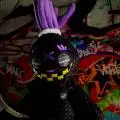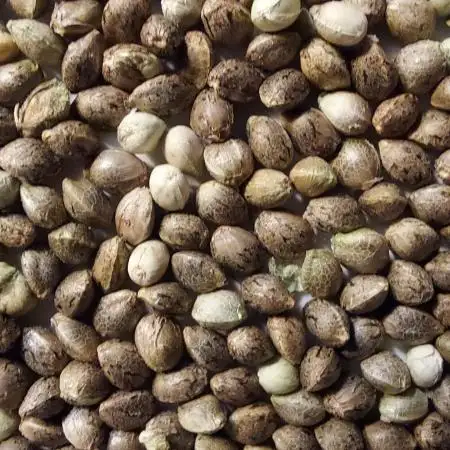The Grow Awards 2026 🏆 

















2 or 1 Lightning
hanfbauer420started grow question 1y ago
Are 2x 150 watt lamps as good as one 300 watt lamp?
I am thinking about upgrading to 300 watts, I already have a Mars Hydro TS1000 with 150 watts. (in 80x80cm / 2.625x2.625ft.)
Thanks for your recommendations growmies😎
Solved
Setup. Lighting
likes
00110001001001111Oanswered grow question 1y ago
Depends on efficacy. Assuming that is the same, you may get better distribution of light with 2 lights vs 1. But, the differences will be small as long as they are all the same efficacy.
The best way to plan for this stuff is to use the umol/s of PAR listed for the light -- assuming it is accurate. More than a few manufcaturers fib quite a bit about this stuff. I can say the mars FC series are accurately rated, but not as familiar with the other stuff.
So, you want a light that gives you 576 umol/s, give or take 5% -- or combination of two light that adds up to that is fine too.
Two TS1000's at 85% over 12 hours would be a good place to start. 56% power in 18/6 cycle vege or autoflowers.
Having too much isn't so bad in this context. Likely save a few watts per umol/s PAR produced (improved efficacy). Running the diodes at 85% will also increase longevity of the diode. As they age, you can amp up the power a bit. The 50k hours before tehy hit 90% of original intensity only applies to the highest efficacy lights. It will be a bit faster than advertised, but at 85% would extend that a bit (ie the increased longevity mentioned).
You could also cover 117% of your current space at full power from 2 of these lights. -- 1.17 * .64 = .75m^2 -- with context of 12 hour operation. Could do autoflowers (18 hours) and cover 1m^2, give or take a bit.
----------------------------
How i got there:
Work backward from the area of coverage -- and assume typical 18-24" hanging distance -possibly a couple inches closer even. At some point getting closer without damage only reudces light penetration (inverse square law applies to how light spread out over incremental distances)
.64m^2
18 hours target of 600 PPFD for 38.9 DLI
600 * .64 = 384 umol/s of PAR needed -- distribution of diodes being important too.
12 hours target of 900 PPFD for 38.9 DLI
900 * .64 = 576 umol/s of PAR needed.
576 / 300watts = 1.92umol/J -- so this is verry low requirement. THat's about what an HPS efficacy is. Even a shitty LED will be 2.2umol/J. 576 / 2.2 = 262 watts of a low-end LED. or 576 / 2.8 = 206 watts of a high efficacy light.
At this size, 60watts per hour saved isn't going to be noticeable. It may takes 4-5 years to gain back the extra cost of the light in this size-range. Simple break even math with your average per kw-hour cost of electricity.
So, you want a light that gives you 576 umol/s, give or take 5% -- or combination of two light that adds up to that is fine too.
---------------
About TS1000
PPE 2.3μmol/j
PPF 343μmol/S
That looks fairly reasonable. They aren't over-promising, so i'd expect these are close enough.
two at 100% would be overkill with 686 umol/s. you'd want to run them at 84-85%. This would exctually improve your efficacy a bit (at diode, possibly hurt a bit at driver, but 85% load should be fine for most drivers - full load for drivers is usually most efficient for that equipment).
In vege for 18/6 you'd need 2/3rds of that -- 56%
All from normal hanging distances. This would require some trial and error to dial in exactly how much you can give without damaging the plant. This is a ~39 DLI target. Depending on temps, rh and most importantly atmospheric CO2, your mileage may vary.
modmyplantsanswered grow question 1y ago
Another light 100%. You don’t really need more watts for that space, but another light gives you the option to rotate them and change angles. That’s a must have if you know what you’re doing.
likes
Complain
00110001001001111Oanswered grow question 1y ago
forgot to mention reflective walls needed for me recomendations. Best to go a bit higher without them.
likes
Complain
Organomananswered grow question 1y ago
Two 150s will give you better coverage than a single 300.
1 like
Complain
Todzillaanswered grow question 1y ago
I’d go with a single lamp in a square configuration. At 43w/sf you’re a little oversized but not much. It’s more efficient to run your lamps at 80%.
Best of luck with your Grow.
1 like
Complain
Meksteranswered grow question 1y ago
Two 150s would be plenty in that tent. Unless you are getting a bigger tent I would spend the money else where. IMO.
1 like
Complain
Hashyanswered grow question 1y ago
I'd be tempted to run another ts1000, depending on age of your current one will dictate if they can be daisy chained and controlled from 1.
1 like
Complain
Similar Grow Questions
Solved

Hydrogrow21
What grow led lights should i go for ?Hi Peeps ! prob a question thats been asked 1000 times lol but i have a 80x80 tents and im looking to buy new LED Lights !
So question is what is your recommendation on lights ? MARS HYDRO ? SPIDERFARM ? or any other makes ? it will be used for a 4 pot WILMA SYSTEM !Setup. Lighting
4y ago
4
4
Solved

Rooflower
Whats going on with my Grow lights ?Hey there ,
I was looking at that picture and noticed a difference brightness of those lights and the red color differ
At least at the camera lens !
They supposed to be the same wattage 🤔
So I was wondering , is that the reason why BananaOG is a bit smaller and underdeveloped 🤓
Week 9
Setup. Lighting
5y ago
3
Solved

Macx39
Starter kits!What can I expect from a 600w starter led, I know they're not meant to be great, but of 2 plants in 1.2 x 1.2 x 2m tent, fan kit, filter, etc. I know it won't great an there loads of other factors but say its a good grow, goes well what can you expect with these of good plant.Setup. Lighting
3y ago
4
7
Solved

Mikewithgreenthumbs420
Hydro mars tsw 2000w got the complete tent set up and I was wonder if anybody else using this same led. when its sleep time after 18 hours running at 25 percent leds been off for 4 hours and I can still see lite power on under hood this normal or not how to fix doesn't seem right
Setup. Lighting
Setup. Other
5y ago
2
Solved

Migh_Lo_Beans
Should I lower my light during flowering?I'm at 24 inches away now, should I lower the light now that she's in full bloom? I went with the recommendation of Mars Hydro and burnt up 3 seedlings as a result. Sadly I only have one bean left of my Fastbuds over this crucial mistake. Running a Mars Hydro SP 250 keep at 36in.Week 5
Setup. Lighting
5y ago
4
2
Solved

Capo420
Lighting ChangeOkay, I feel like I am asking a lot of questions so let me apologize for that. Lol. So my plants just seem to be behind most people's I see on here.Is it too late to change my lighting schedule? My theory was northern hemisphere gets many days 24hr lighting. Good or Bad?Setup. Lighting
4y ago
1
1
Solved

M4RKY
Special queen needs help!Hi guys, me and my mates first grow. We have had to move it indoors as it's getting conspicuous and its has started to go yellow and stumped its growth. Should we still be feeding it nutrients? ( we are using 130w bulb 10 hours) thanks
Leaves. Color - Yellow
Setup. Lighting
Feeding. Schedule
5y ago
1
3
Solved

luxgrower
Yellowing leaves & tips curling down on 14th day. Coco / Autopot / Hesi / Mars Hydro fc-1500Would gladly use some help with my first grow 🙏
2 main reasons come to mind after googling:
1. I overwatered thinking it's hard to do since I'm using the Air dome.
2. Too intense light. Was checking a lot of growers that actually grow 24/0 and went for it 75% 40cm.
1y ago
9
5
Solved

SmokinJuan
How big of an issue is light? HELPHow do you know whether to raise or lower your lights? My LED is pulling about 250watts from the wall... Box said keep light 30" away during veg... But I'm not so sure about that. Thoughts? How will I know if it needs more/less light?Setup. Lighting
6y ago
2
2
Solved

zkittlezjunior
How Much Buds can i get from 150W Cob Led with using lst techniques in auto ?Like i asked.I have 150W Full Spectrum Cob Led.The amount of lux is about the 12K by the way.So im gonna grow only one plant like auto royal dwarf or white widow auto.Do you think how much grams can i get with this condition?Buds. Not fattening
Other. General questions
Setup. Lighting
5y ago
1
2
Solved

Martian
Irregular light schedule.I am thinking about giving her 24h lights a few days a week and then go back to 18h. Just to give her a boost. Will this irregular light schedule harm her?
My first thought is that it doesn’t matter much since she is an auto, however I know that plants love balanced environments.Week 3
Setup. Lighting
10mo ago
14
8
Solved

roro_204
Yellow/ Lime Leaves ????I have 3 grow rooms.
I moved all the deficiency plants to 1 room.
The whole half of the plant is turning really light yellow/
Are my lights too close to the plants ?
Or is my feed to low?
Leaves. Color - Yellow
Setup. Lighting
Feeding. Deficiences
4y ago
4
3
Solved

Ghostguy1337
When to switch LED to 100% power?Another question. I appreciate everyone's response to the last ones.
I am finding it difficult to google this one. When do I switch my LED to 100%? Currently, I am running it at roughly 60% at about 24in. Am I in 'true' veg? Its working on its 3rd node that has 5 fingers.4y ago
3
2














